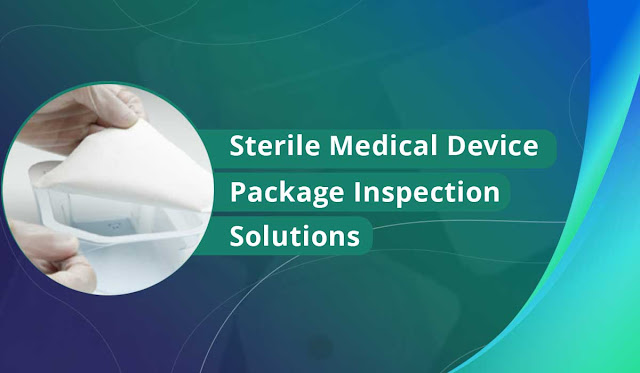Sterile Medical Device Package Inspection Solutions
CCI Technologies to Inspect Sterile Medical Devices
Sterile medical device package inspection methods are used to ensure that the packaging of such devices is free from defects and contaminants before the devices are used in medical procedures. There are various methods and technologies available for conducting medical device package inspection, including Vacuum Decay and Airborne Ultrasound technology.
Vacuum Decay (ASTM F2338)
Vacuum Decay is a non-destructive container closure integrity testing (CCIT) technique that focuses on package integrity and the detection of leak paths. Vacuum Decay gives quantitative, deterministic, and reliable test results to assure package integrity in comparison to manual inspection and other non-deterministic test techniques. Vacuum Decay technology can accommodate a broad range of package types, including filled and sealed rigid, semi-rigid, and flexible packaging consisting of non-porous or porous materials. This test begins by placing packages in an evacuation test chamber that is properly fitted and equipped with an external vacuum source. To detect any deviations from a predetermined targeted vacuum level, the vacuum levels are continuously monitored. If the packaging has a defect, air will leak out and enter the test chamber. On the other hand, packages without any defect hold in the air and maintain the chamber vacuum level constant. Vacuum Decay technology is one of the most effective and accurate vacuum decay leak testing methods.
Benefits of Vacuum Decay Technology
- Non-destructive, non-subjective, no sample preparation.
- Deterministic, quantitative test method.
- Supports sustainable packaging and zero waste initiatives.
- Results have proven superior to dye ingress.
- Defect detection down to 0.01 cc/min.
- ASTM test method and FDA standard.
Airborne Ultrasound (ASTM F3004)
Airborne Ultrasound is a non-destructive method of seal quality inspection. It is an FDA recognized standard and ASTM Test Method F3004 for testing seal quality. These tests are primarily carried out to improve the seal quality assessment of pouches, flexible packaging, and tray seals. Tyvek, paper, foil, film, aluminum, plastic, and poly are just a few of the packaging materials that may be used with Airborne Ultrasound technology to enable comprehensive seal quality evaluations. Under this technique, sound waves are reflected when ultrasound waves travel through the packaging seal. If there is a leak or defect, the signal intensity is reduced or eliminated. To locate the leak, these fluctuations are carefully monitored. Most leak test techniques encounter the problem of being unable to identify non-leak defects. However, using Airborne Ultrasound technology, users can recognize a variety of seal defects, including visible and invisible, leaky and non-leaking, process-related and random.
Benefits of Airborne Ultrasound Technology
- Deterministic inspection technique resulting in quantitative results.
- Non-destructive, non-subjective, zero sample preparations.
- Detects defects in the final pouch seal in real time.
- This method works with any material and combination, regardless of color, porosity, surface finish, transparency, and print.
- The subjective manual vision inspection procedures are no longer necessary.
- Characterizes the seal's overall quality and consistency.
It is important to note that inspection and testing should be performed on all medical devices before they are shipped or distributed to customers or hospitals. Hence, manufacturers use automated inspection solutions such as Airborne Ultrasound and Vacuum Decay for testing. These methods are designed to detect defects and contaminants in the packaging that may be difficult to detect with the human eye. They provide more consistent and accurate results, which leads to an improved overall quality of the devices.




Comments
Post a Comment